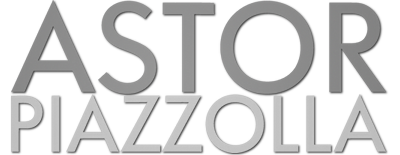Cover NOT yet available in
Join Patreon for 4K upload/download access
Your Rating (Click a star below)
![]()
![]()
![]()
![]()
![]()
![]()
![]()
![]()
![]()
![]()
Track List
01) Alevare
02) Tema de María
03) Balada para un organito loco
04) Milonga carrieguera
05) Fuga y misterio (instrumental)
06) Poema valseado
07) Tocatta rea
08) Miserere canyengue
Cd 2
01) Contramilonga a la funerala
02) Tangata del alba (instrumental)
03) Carta a los arboles y a las chimeneas
04) Aria de los analistas
05) Romanza del duende
06) Allegro tangabile
07) Milonga de la anunciacion
08) Tangus dei
01) Alevare
02) Tema de María
03) Balada para un organito loco
04) Milonga carrieguera
05) Fuga y misterio (instrumental)
06) Poema valseado
07) Tocatta rea
08) Miserere canyengue
Cd 2
01) Contramilonga a la funerala
02) Tangata del alba (instrumental)
03) Carta a los arboles y a las chimeneas
04) Aria de los analistas
05) Romanza del duende
06) Allegro tangabile
07) Milonga de la anunciacion
08) Tangus dei
6:17
4:20
7:27
5:20
3:16
2:49
4:41
6:01
5:07
4:54
3:04
8:37
5:31
2:52
3:06
9:46
Data Complete
 60%
60%
Total Rating
 60%
60%Total Rating
![]() (0 users)
(0 users)
Back Cover![]()
CD Art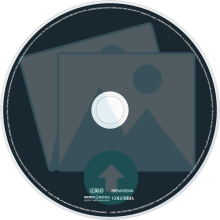
3D Case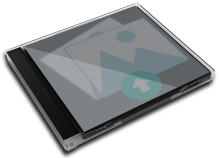
3D Thumb
3D Flat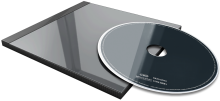
3D Face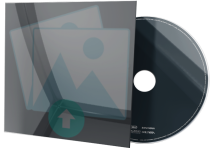
3D Spine
First Released
![]() 1968
1968
![]() Jazz
Jazz
![]() Gentle
Gentle
![]() Jazz
Jazz
![]() ---
---
![]() ---
---
![]() Album
Album
![]() 0 copies
0 copies
Album Description
Available in:



María de Buenos Aires is a tango opera (tango operita) with music by Ástor Piazzolla and libretto by Horacio Ferrer which premiered at the Sala Planeta in Buenos Aires in May 1968.
The surreal plot centers on a prostitute in Buenos Aires, Argentina; the second half takes place after her death. The characters include María (and, after her death, the Shadow of María), a singer of payadas, various members of the Buenos Aires underworld, a poet narrator who is also a goblin-like duende, several marionettes under his control, and a circus of psychoanalysts. Several elements of the libretto suggest parallels between María and Mary, the mother of Jesus (in Spanish, María) or to Jesus himself.
While certainly not in the narrow sense an opera ballet, because the dance is tango rather than classical ballet, it falls within the tradition of having set dance pieces integral to an operatic work.
The music draws on the nuevo tango idiom for which Piazzolla is famous. The original idea for the story was conceived by Piazzolla's then lover, Egle Martin (though she was already married to Eduardo "Lalo" Palacios). The title role was originally conceived for Martin, but while Piazzolla was still composing the operita, he and Martin broke up after he asked her husband for her hand at Christmas in 1967. According to Martin, Piazzolla said to Lalo, "She is music, she can't belong to anybody, no she is music, she is music, and that's me." After their rift a replacement was desperately needed, but Piazzolla soon met folksinger Amelita Baltar at the Buenos Aires nightclub "Nuestro Tiempo", formerly called "676" and once Piazzolla's home base in Argentina. Baltar's identification with the character Maria paired with her beauty and captivating stage presence made her ideal.
The piece is written for at least three vocalists (one of whom, the narrator, speaks rather than singing). For the orchestration Piazzolla augmented his current working quintet: Piazzolla (bandoneón), Antonio Agri (violin), Jamie "El Russo" Gosis (piano), Oscar Lopez Ruiz (guitar) and Kicho Díaz (double bass); with viola, cello, flute, percussion, vibraphone and xylophone, and another guitar. Maria de Buenos Aires has often been performed with dancers as well as the musicians. There are several extant arrangements, including Piazzola's own and one by Pablo Ziegler.

User Album Review
None...
External Album Reviews
None...
User Comments


Available in:
María de Buenos Aires is a tango opera (tango operita) with music by Ástor Piazzolla and libretto by Horacio Ferrer which premiered at the Sala Planeta in Buenos Aires in May 1968.
The surreal plot centers on a prostitute in Buenos Aires, Argentina; the second half takes place after her death. The characters include María (and, after her death, the Shadow of María), a singer of payadas, various members of the Buenos Aires underworld, a poet narrator who is also a goblin-like duende, several marionettes under his control, and a circus of psychoanalysts. Several elements of the libretto suggest parallels between María and Mary, the mother of Jesus (in Spanish, María) or to Jesus himself.
While certainly not in the narrow sense an opera ballet, because the dance is tango rather than classical ballet, it falls within the tradition of having set dance pieces integral to an operatic work.
The music draws on the nuevo tango idiom for which Piazzolla is famous. The original idea for the story was conceived by Piazzolla's then lover, Egle Martin (though she was already married to Eduardo "Lalo" Palacios). The title role was originally conceived for Martin, but while Piazzolla was still composing the operita, he and Martin broke up after he asked her husband for her hand at Christmas in 1967. According to Martin, Piazzolla said to Lalo, "She is music, she can't belong to anybody, no she is music, she is music, and that's me." After their rift a replacement was desperately needed, but Piazzolla soon met folksinger Amelita Baltar at the Buenos Aires nightclub "Nuestro Tiempo", formerly called "676" and once Piazzolla's home base in Argentina. Baltar's identification with the character Maria paired with her beauty and captivating stage presence made her ideal.
The piece is written for at least three vocalists (one of whom, the narrator, speaks rather than singing). For the orchestration Piazzolla augmented his current working quintet: Piazzolla (bandoneón), Antonio Agri (violin), Jamie "El Russo" Gosis (piano), Oscar Lopez Ruiz (guitar) and Kicho Díaz (double bass); with viola, cello, flute, percussion, vibraphone and xylophone, and another guitar. Maria de Buenos Aires has often been performed with dancers as well as the musicians. There are several extant arrangements, including Piazzola's own and one by Pablo Ziegler.
User Album Review
None...
External Album Reviews
None...
User Comments

No comments yet...

